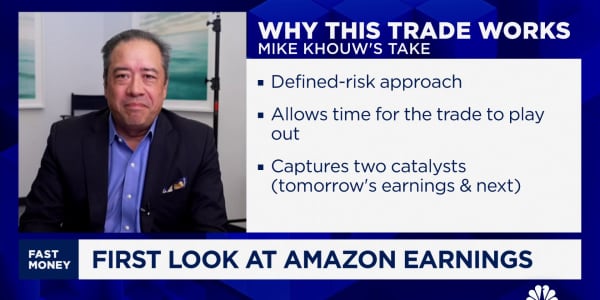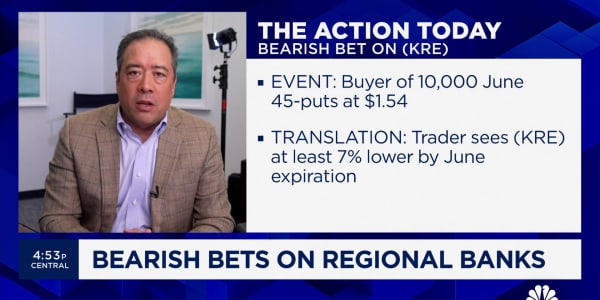
Oil prices are their highest levels for the year, and now some traders are fleeing from their bearish bets on energy stocks.
A weakening dollar is one of the big reasons why U.S. crude oil prices are once again trading close to $60 per barrel, their highest level since December. And energy stocks have been big beneficiaries of crude's rebound.
Exxon Mobil, which saw its first-quarter revenues slashed by 36 percent compared to the previous year, is up 3 percent this month. Despite the lower numbers, the nation's fourth-largest company managed to beat Wall Street's expectations when it reported on Thursday.
Fellow energy giant Chevron, which reports Friday, has rallied this past month as well, rising 6 percent. Chevron and Exxon Mobil together make up 28 percent of the ETF tracking the energy sector (trading under the symbol XLE) which has had a 6 percent gain in that time.
This has some traders closing out their bearish positions in the energy sector in order to avoid further losses. On Wednesday, when bulls in the options for the XLE outpaced bears by a ratio of 2 to 1, a trader sold 5,000 contracts of 75-strike puts expiring in June for a price of 45 cents each. As this was a closing trade, the trader is indicating that he or she no longer expects the XLE to see a price below $75—or nearly 10 percent lower than where the ETF finished the day on Wednesday—any time in the next two months.
Read More ExxonMobil beat was best in quality among supermajors: Analyst
A put is a bearish option that lets a purchaser sell shares at a set price within a given time frame. Since each contract controls 100 shares, the trader accepted $225,000 to dispose of the position.
According to Dan Nathan, co-founder of RiskReversal.com, the trader may have given up on the position after the XLE failed to break significantly below that $75 level the three times it's been tested since December.
But it's the longer-term chart of the XLE that may have given the trader reason to think the ETF won't see a price under $75 for now. Nathan sees a steady uptrend holding since the XLE made lows in 2009. It's a line that can even be extended all the way back to 2002.
The XLE "held that uptrend, and it looks ready to make a move higher," said Nathan, a CNBC contributor.
At the same time as some options traders exit their bearish positions in the XLE, prices on call options—bullish bets on share prices—may now be cheaper. That's because implied volatility, which dictates the price of options, has been crushed as of late. After trading as high as 43.5 in January, implied volatility is now down to 17.3.
"For options traders who are looking to make directional bets in the oil patch, this is one way to do it right now," said Nathan. "It wasn't the case when options prices were much higher a couple of months ago when oil was in a free fall."






